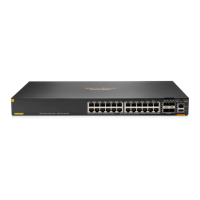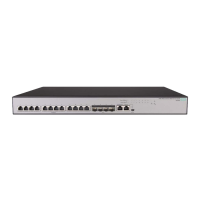2
Usage guidelines
This feature enables a device to log ARP events when ARP cannot resolve IP addresses correctly.
The device can log the following ARP events:
• On a proxy ARP-disabled interface, the target IP address of a received ARP packet is not one of
the following IP addresses:
{ The IP address of the receiving interface.
{ The virtual IP address of the VRRP group.
• The sender IP address of a received ARP reply conflicts with one of the following IP addresses:
{ The IP address of the receiving interface.
{ The virtual IP address of the VRRP group.
The device sends ARP log messages to the information center. You can use the info-center source
command to specify the log output rules for the information center. For more information about
information center, see Network Management and Monitoring Configuration Guide.
The device can generate a large number of ARP logs. To conserve system resources, enable ARP
logging only when you are auditing or troubleshooting ARP events.
Examples
# Enable ARP logging.
<Sysname> system-view
[Sysname] arp check log enable
arp max-learning-num
Use arp max-learning-num to set the maximum number of dynamic ARP entries that an interface
can learn.
Use undo arp max-learning-num to restore the default.
Syntax
arp max-learning-num max-number
undo arp max-learning-num
Default
The maximum number of dynamic ARP entries that an interface can learn depends on the ARP table
capacity set by using the switch-mode command. For information about the switch-mode
command, see Fundamentals Command Reference.
Views
Layer 2 Ethernet interface
Layer 2 aggregate interface view
Layer 3 Ethernet interface/subinterface view
Layer 3 aggregate interface/aggregate subinterface view
Virtual switch interface view
VLAN interface view
Predefined user roles
network-admin
Parameters
max-number: Specifies the maximum number of dynamic ARP entries for an interface. The value
range for this argument is 0 to N. The value for N depends on the ARP table capacity.

